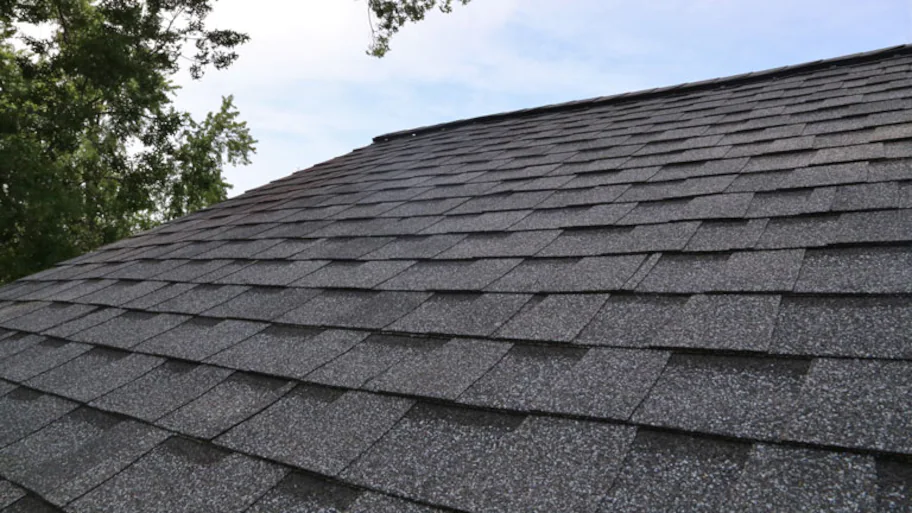Comparing Prices Among Roofing Companies in Gainesville Florida
Wiki Article
Best Practices for Ensuring Proper Roof Covering Air Flow
Making sure appropriate roof covering air flow is critical for the long life and efficiency of a roofing system. A balanced intake and exhaust vent proportion, generally 1:300, plays a pivotal duty, with intake vents ideally placed at the reduced edge of the roofing for great air entrance and exhaust vents at the optimal for cozy air departure. Regular assessments to recognize obstructions and preserve clear air movement are critical. Keeping insulation away from vents is important to stop airflow limitation. Comprehending these fundamental components sets the stage for more thorough understandings right into setup and upkeep methods that can substantially enhance your roof covering system's efficiency.Understand Air Flow Essentials
Effectively recognizing air flow basics is important for ensuring the durability and performance of roof covering systems. Reliable air flow mitigates wetness buildup and temperature level extremes in the attic, both of which can result in significant architectural damages with time. A well-ventilated roofing assists in stopping typical problems such as mold growth, timber rot, and ice dams, which can compromise the honesty of the roofing materials and the underlying structures.The primary goal of ventilation is to facilitate the movement of air, enabling a consistent exchange in between the interior and exterior environments. This balance is achieved with a combination of intake and exhaust vents that interact to preserve optimal airflow. Intake vents, commonly situated along the soffits or eaves, allow fresh air to go into the attic room, while exhaust vents, commonly situated at or near the roof ridge, enable warm, damp air to leave.
Key aspects affecting the efficiency of roof covering ventilation consist of appropriate placement, appropriate sizing, and making sure that both intake and exhaust vents are unblocked. Routine evaluation and upkeep are crucial to recognize prospective blockages, damage, or inefficiencies in the air flow system, thus guarding the roofing system's performance and durability.
Sorts Of Roof Covering Vents
Roofing system vents play a critical role in maintaining efficient attic room ventilation and, by expansion, the total wellness of the roof covering system. Numerous kinds of roofing vents are available, each with distinct benefits customized to specific roof demands.
Soffit vents are mounted under the eaves and operate in tandem with roof vents to make sure a balanced consumption and exhaust system. By allowing cooler air to go into from below, soffit vents facilitate the expulsion of hot air through top vents. Gable vents, situated on the outside walls of the attic room, offer one more efficient service, specifically in homes with gable roofing systems.
Analyze Your Existing Ventilation

Next, take into consideration the age and condition of your roofing products and air flow elements. Older systems may not comply with current building codes or might have degraded in time, minimizing their effectiveness. Conduct an extensive evaluation to determine any indications of damage, such as corrosion, damage, or spaces that could compromise the system's performance.
In addition, gauge the attic temperature and humidity levels. High temperature levels and moisture can indicate inadequate air flow.
Installation Best Practices
Effective installment of roofing ventilation systems is extremely important for making certain optimal performance and durability. Proper installment starts with understanding the details air flow demands of the structure and the roofing it covers. This entails calculating the proper proportion of consumption to see tire vents, usually sticking to the 1:300 policy, which states one square foot of ventilation for every 300 square feet of attic floor area.
The positioning of vents is similarly important. Consumption vents ought to be mounted at the roof's reduced edge, often in the soffits, to permit great air to get in. Exhaust vents, on the other hand, must be installed near or at the roofing system's optimal to help with the leave of cozy, moist air. This produces a natural air movement that aids keep temperature and wetness equilibrium within the attic room.
Seal all vent connections carefully to stop air leaks and potential water seepage. Use top notch products and comply with supplier standards to guarantee sturdiness and performance. In addition, incorporating ridge vents with baffles can dramatically enhance airflow effectiveness by stopping wind-driven rain and snow from entering the attic.
Eventually, accurate installment of roof covering air flow systems mitigates possible concerns such as mold and mildew development, ice dams, and structural damages, making sure the roof covering's honesty and the building's total wellness.
Normal Upkeep Tips
Consistency in maintenance practices is fundamental to ensuring the long-lasting efficiency of roofing ventilation systems. Routine assessments are vital, ideally done biannually-- in the spring and fall. During these evaluations, make certain that vents are devoid of debris, nests, and other blockages that could restrain air flow. Check for any type of signs of dampness buildup or mold, as these can show inappropriate ventilation or leakages (roofing companies gainesville florida).
Use a soft brush or a vacuum to get rid of dust and debris from consumption helpful hints and exhaust vents. Be mindful not to damage the air vent displays or louvers during the process.
Appropriate insulation is just as essential. Guarantee that attic room insulation does not obstruct the vents, as this can badly limit air movement. Reposition or change it to keep an effective obstacle. if any insulation has moved or resolved.
Finally, change any kind of damaged or missing out on elements without delay. Broken vents, split shingles, or worn-out blinking can all add to poor air flow and should be dealt with without hold-up. Regular maintenance guarantees that the roof ventilation system functions optimally, thereby prolonging the life-span of the roof content itself.
Conclusion
Making sure correct roof ventilation is extremely important for preserving the efficiency and toughness of a roof covering system. Adherence to the 1:300 consumption and exhaust air vent proportion, combined with the calculated placement of vents, is essential.A well balanced intake and exhaust air vent ratio, generally 1:300, plays a crucial role, with consumption vents preferably put at the lower side of the roof for great air entry and exhaust vents at the peak for warm air departure. Consumption vents, commonly situated along the eaves or soffits, allow fresh air to go into the attic space, while exhaust vents, typically positioned at or near the roof ridge, make it possible for warm, moist air to escape.
Soffit vents are set up under the eaves and job in tandem with roofing vents to make certain a balanced intake and exhaust system. By allowing cooler air to enter from below, soffit vents help with the expulsion of hot air with top vents. Adherence to the 1:300 consumption and exhaust vent ratio, combined with the calculated placement of vents, is important.
Report this wiki page